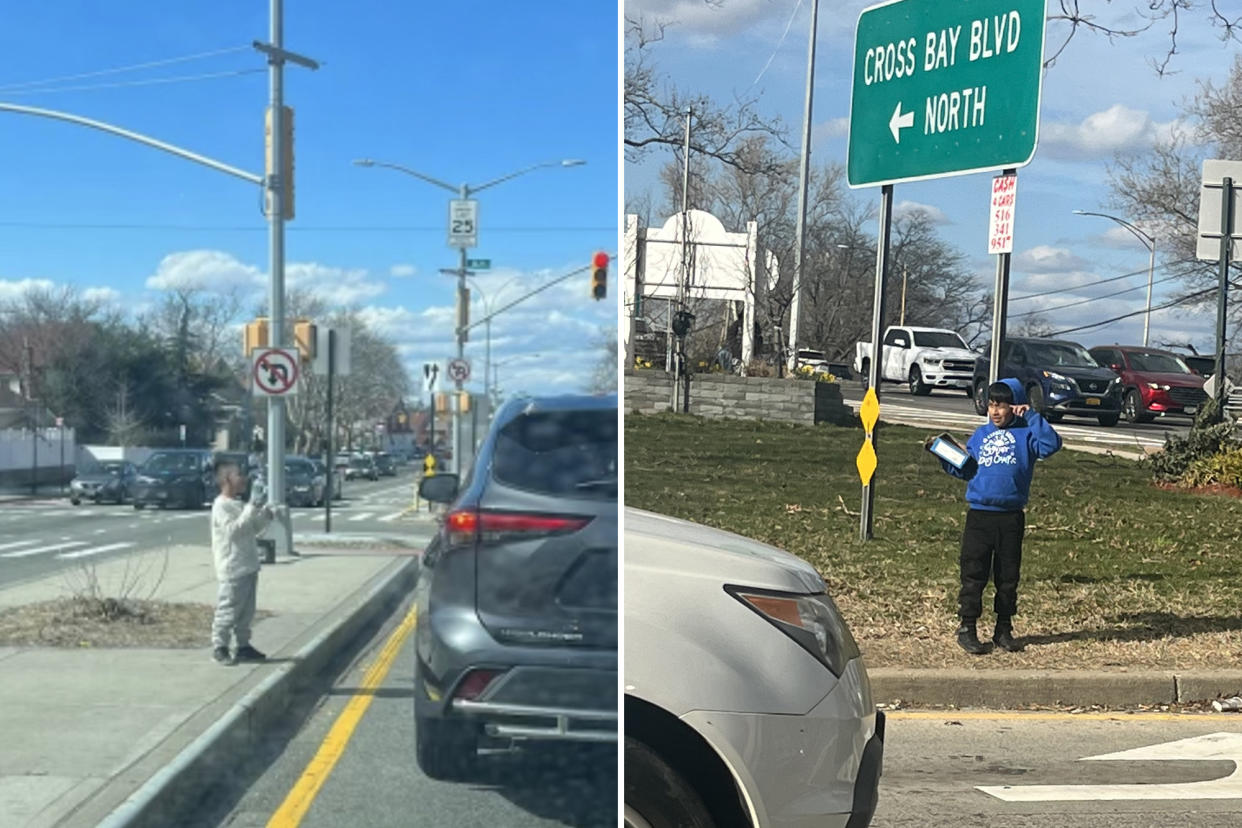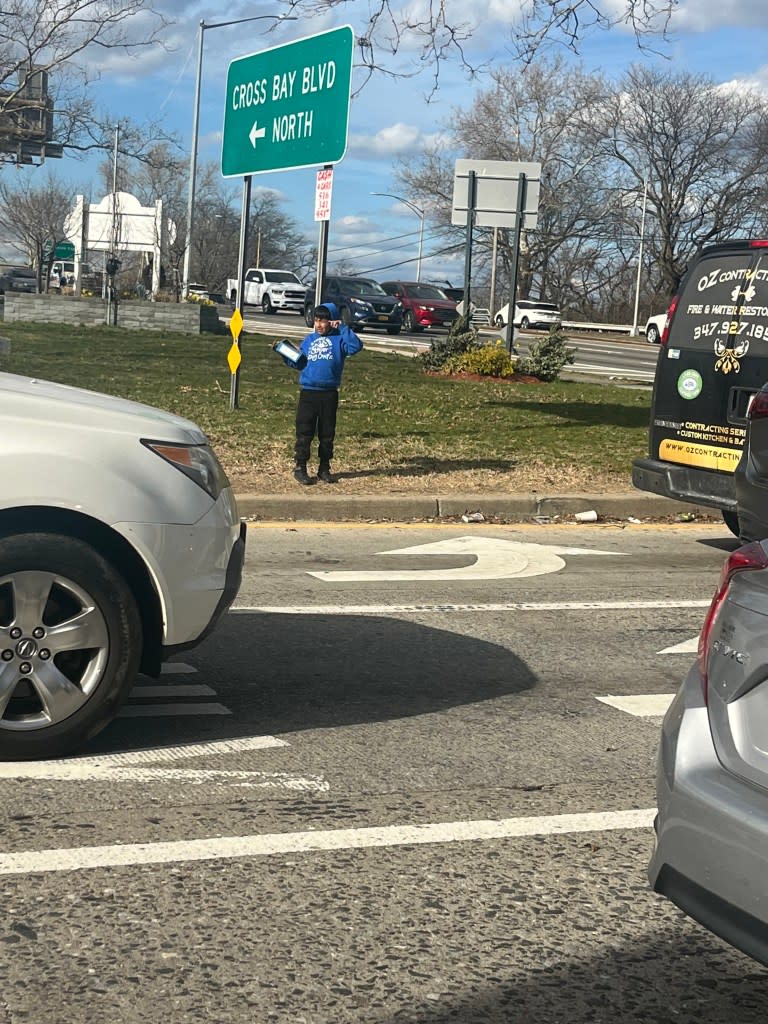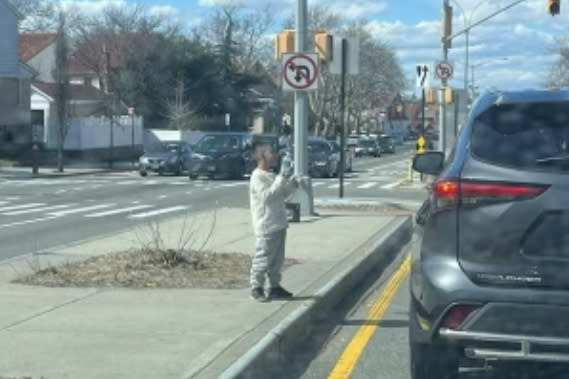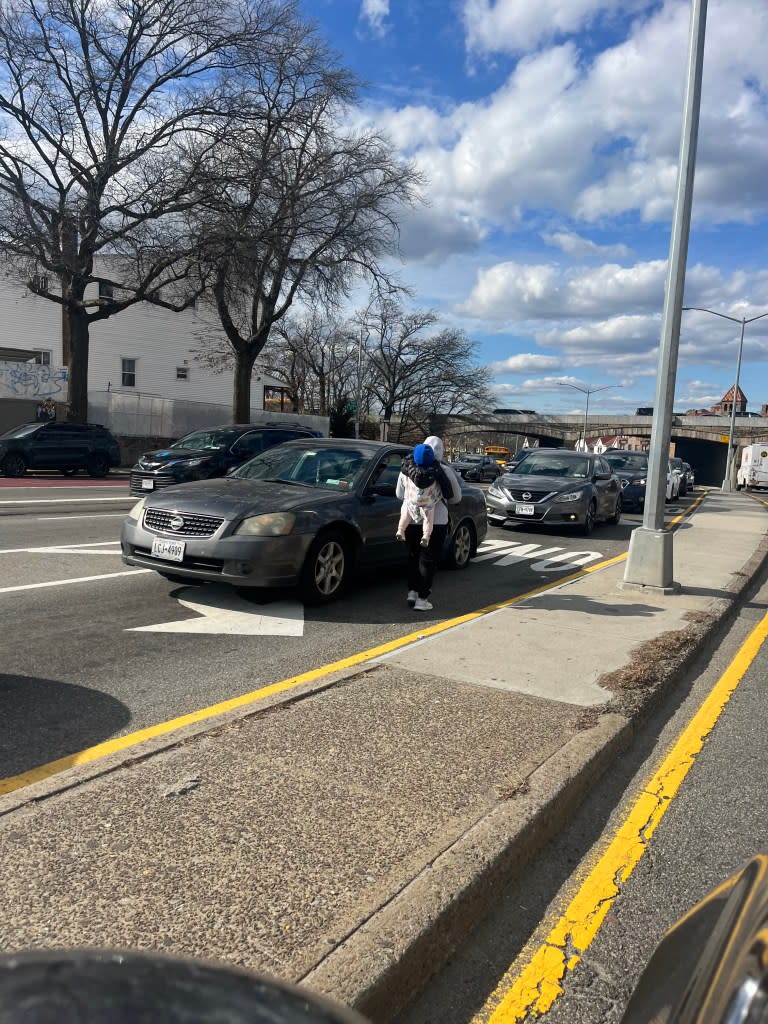Migrant kids — some who look no older than 5 — hawking water bottles on dangerous NYC roads with no adult supervision

Young migrant children are brazenly hawking water bottles and other goods along some of Queens’ busiest roadways – alone – even occasionally stepping into traffic to make a fast buck.
Shocking photos taken by staffers at Councilwoman Joann Ariola’s office this week and provided to The Post show kids peddling on major thoroughfares in southeast Queens — with adults nowhere in sight.
In one photo, a boy less than four-feet tall who looks no older than 5 sells water on a median separating traffic on Woodhaven Boulevard near the Jackie Robinson Parkway in Glendale.

Staffers said the unaccompanied child, who was braving windy, mid-40 temps without a hat or jacket, occasionally walked into the street when traffic slowed to complete sales.
Another photo taken Monday a few miles south shows a different boy wearing a hoodie and standing on grass near the Cross Bay Boulevard entrance to the Belt Parkway – a treacherous strip with a long history of pedestrian fatalities and car crashes.
He routinely walked back and forth holding candy while an older female adult — over a block a way — sold the same product.
“Seeing these children out there on the medians, ducking in and out of traffic, is especially concerning,” said Ariola (R-Queens), whose office routinely fields calls about the young peddlers from concerned constituents.

“I’ve heard from several motorists who expressed their fear that someone might one day accidentally hit one of these kids. We don’t want to see any children lose their lives, or have any constituents have to live with the guilt of being involved in what is otherwise an avoidable accident.”
“These kids should be in a classroom, not on the side of Woodhaven Boulevard selling chocolate bars or water,” she added.
In a scene becoming all too familiar for New Yorkers living near other busy roads and highways in the Big Apple, Cross Bay Boulevard and Woodhaven Boulevard also routinely draw migrant moms so desperate to make a buck that they hawk food and drink in traffic — often with babies strapped to their backs.
The children and moms working the strips in southwest Queens are usually migrants from Ecuador, according to a member of Ariola’s staff who spoke with some of them.
Sherry Algredo, chairwoman of Queens Community Board 9 and mother of two, said she’s concerned about the migrant kids’ health, saying they’re unnecessarily sucking in dangerous car emissions and working in all kind of extreme weather while dodging traffic.
“I realize people get desperate to the point where you will do anything to get some money for food for your kids, but putting your kids in danger is not the proper way to do it,” said Algredo, 55, of Richmond Hills. “There must be some other way that they can get an income than [kids] being on the streets doing this.”
She said she’s complained to cops but the migrants simply return after authorities tell them to leave.
Laura Heedles, 65, of Howard Beach, said it also saddens her to see young children working along major roadways – adding she routinely calls Ariola’s office and the NYPD to complain “before they get hurt.”
“They should be in school,” she said.

Nearly 185,000 migrants have arrived in Big Apple since spring 2022, and the city is caring for about 65,000.
The city has already spent about $3.5 billion dealing with its migrant crisis, and Mayor Eric Adams projects the price tag with soar to $12 billion by the end of fiscal year 2025.
City Hall spokesperson Kayla Mamelak said the Adams administration realizes “the health and safety of all people – especially children – is always a top priority,” so it’s “doubling efforts” to educate migrants about support available to them to ensure “children are supervised and safe.”
“This includes making sure school-aged children are enrolled in schools, parents know about safe after-school programs available to kids, and childcare referrals – to community-based organizations that we partner with – are made whenever possible,” Mamelak added.

